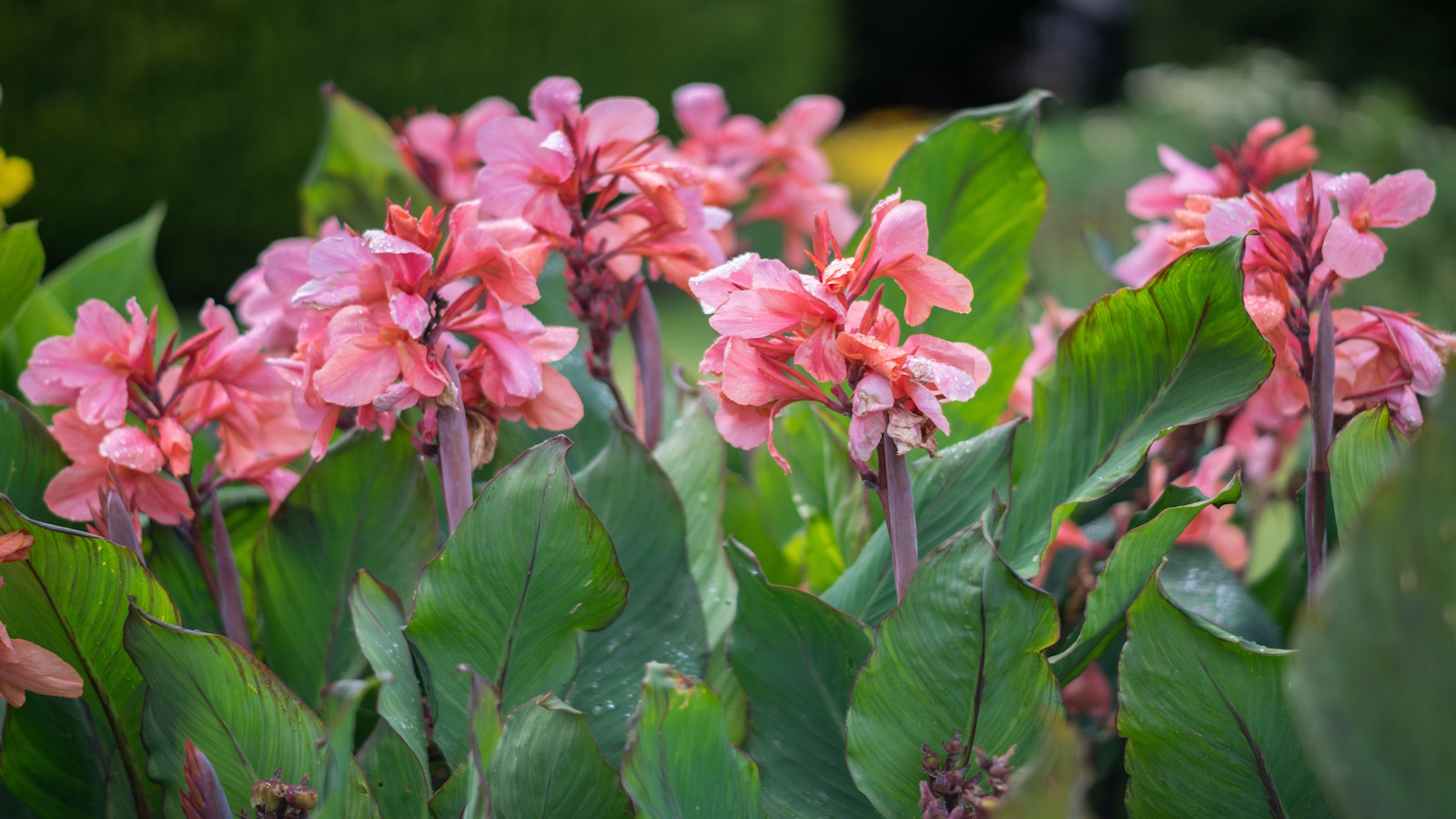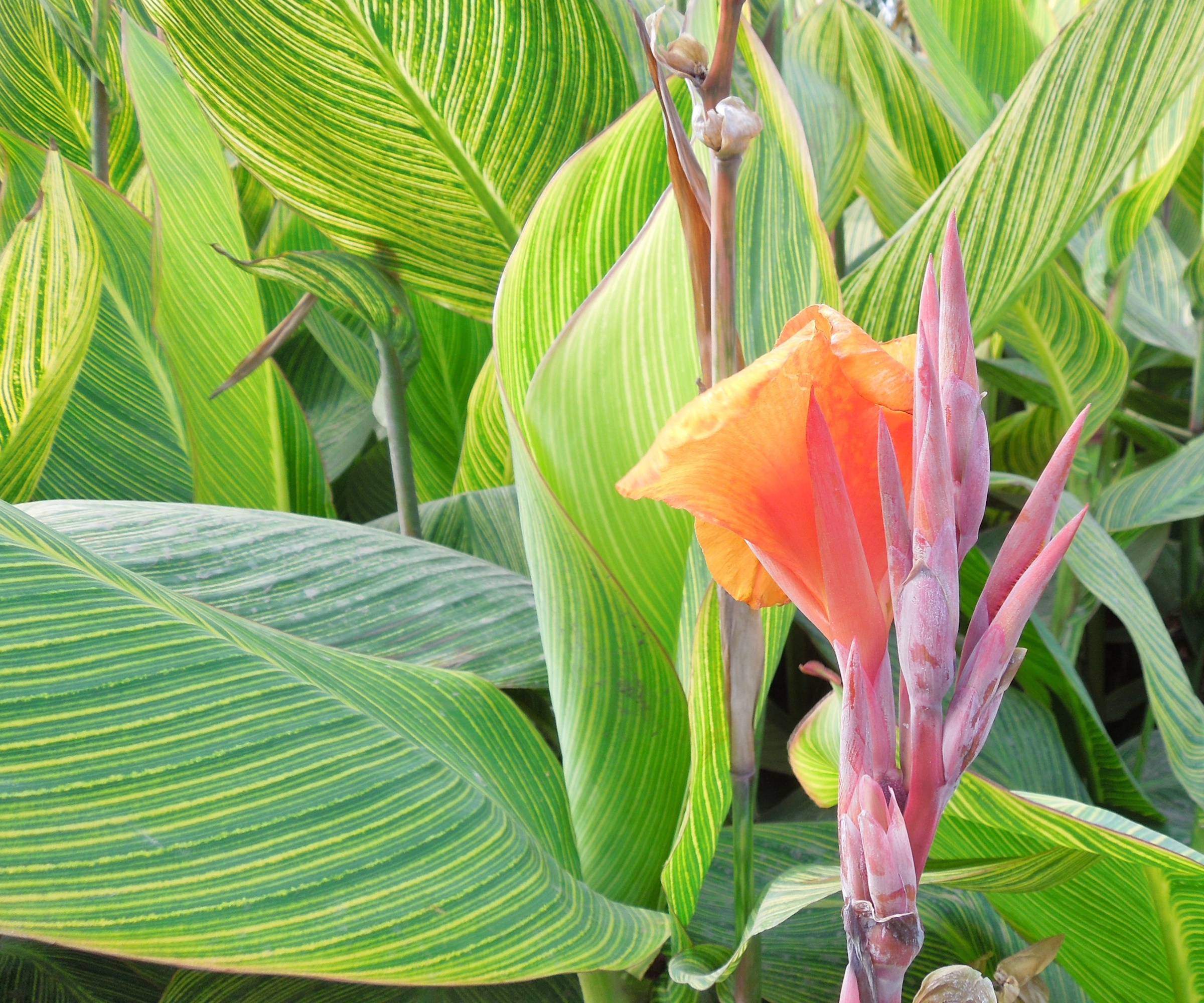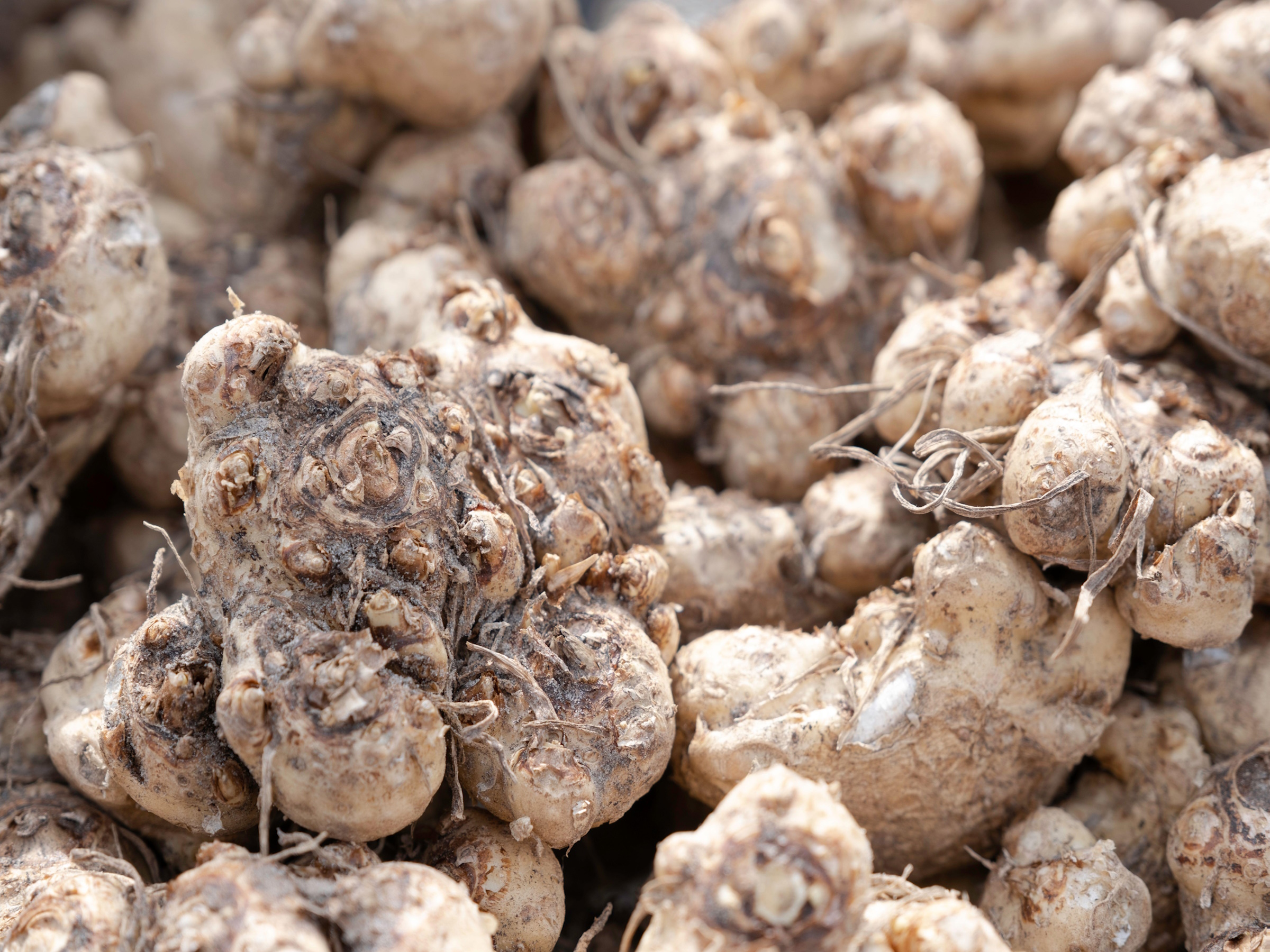How to grow canna lilies – experts share their tips
Knowing how to grow cannas from seed, rhizomes and by division will ensure your yard is brimming with tropical color all summer long


Exotic and easy-to-grow, canna lilies are real head-turners in the summer garden. Reaching heights up to 8ft in one season, you can’t fail to miss their lush, stripy leaves and punchy colored blooms. Originating from tropical and subtropical Americas, they instantly conjure up thoughts of warm and humid climes and are the perfect showpiece for pots and borders.
Incredibly fast growing, it’s no surprise to discover that these tender plants are not a true lily, but instead are related to banana and ginger. Blooming continuously from midsummer to the first frosts – or longer if you live in zones 7-10 – they need little attention other than regular watering and a handful of slow-release or organic fertilizer every so often.
There’s no need to support these true sun lovers, their sturdy, straight stems do the job perfectly, making them ideal for creating poolside shade and seasonal privacy. Their paddle-like leaves do dislike windy, exposed areas will shred and become tatty in strong wind and coastal areas, so it's worth finding out how to prune canna lilies if this happens. Here, garden experts share their canna growing advice so you can fill your yard with these majestic beauties.

How to grow canna lilies
If you want to learn how and when to grow canna lilies, there are in fact several ways of growing them - from seed, rhizomes and by division.
How to grow canna lilies from seed

It is easy to grow these floral giants from seed, it just takes a little longer than raising plants from rhizomes and they will vary from their parent plant.
‘The canna’s seed is dark colored, and pea sized,’ explains horticulturist Peggy Anne Montgomery. ‘They have a very hard seed coat that needs to be scarified using a knife. I’ve done it just for fun and it’s not terribly difficult, but in general I buy them in containers or use the ones I’ve overwintered.’
If you don’t fancy scarifying - or nicking - the seed, try soaking them in warm water for 48 hours, before sowing in multipurpose compost.
Design expertise in your inbox – from inspiring decorating ideas and beautiful celebrity homes to practical gardening advice and shopping round-ups.
Cover the seed with 1/2inch of compost. As a tropical plant, they need a temperature of 70°F to germinate. Once shoots appear, keep at a steady temperature of 60°F, before planting outside when frosts have passed.
Canna lilies raised from seed will not bloom until their second year, but the satisfaction in seeing their development is huge.

Peggy Anne Montgomery is a horticultural professional with more than 30 years of US and international experience in garden marketing and communications. An account executive for the Garden Media Group, she currently represents Dutch Royal Anthos, a trade organization for Dutch bulb growers and exporters in the US and Canada.
How to grow canna lilies from rhizomes

The quickest and most reliable way to grow canna lilies is from rhizomes. These thick, knobbly roots are are easy to cajole into life.
‘Before planting, make sure the soil temperature is 50°F or above and that the danger of frost has passed,’ says plant expert and buyer Katie Sunderlage. ‘You can start your canna indoors if you are in a colder climate.
'Choose a pot with drainage and that’s large enough to accommodate the canna lily once fully grown, as they can get top heavy. Use a good free draining potting soil and place the rhizome horizontally about 2-3 inches below the surface of the soil. Don’t worry about the direction of the eyes, they will grow upward regardless of where they are located when planted.’
Readily available from plant nurseries and online specialists, our favorites include the zesty orange blooms Wyoming Canna Lily from American Meadows set against a backdrop of claret and green foliage, and Bengal Tiger Canna from Nature Hills with it's mesmerizing striped leaves in cream, yellow and green.

Operations Manager at Holland Group, managing the customer service department and purchasing. Katie has been in the green industry since 2005 in the Greater Milwaukee area, earning her degree in Horticulture in 2008. She has been able to share her love for plants working in multiple garden centers, in sales positions and most recently in an online retail platform at Holland Group.
How to grow canna lilies by division

These flamboyant plants can easily be propagated from cuttings taken from their thick fleshy roots. This is a great way to enjoy more plants for less, and all it takes is a little know-how and a clean, sharp knife.
Spring is the best time to divide up canna lilies. Clean off any soil from the overwintered roots and look for sections of rhizome that have at least two or three ‘eyes’ or growing points.
Using a sharp pruning knife - such as this foldable pruning knife from Walmart - make clean, straight cuts to remove these sections. Carefully pot up in a free-draining, loam-based compost, making sure the cutting is 3 inches deep. Water and allow to drain, before placing in bright but indirect light and shoots appear. Plant outside when temperatures reach 50°F or above and there is no chance of frost.
FAQs
How do you store canna rhizomes over winter?
If growing canna lilies in the ground, wait until the first frost has knocked back the foliage before carefully digging up the rhizome. ‘Remove as much soil from the rhizome as possible and place in a warm, dry location to allow them to dry out,’ says says plant expert and buyer Katie Sunderlage. ‘You can then store these in a cool, dry, dark location during the winter months. You do want to allow some air flow but make sure the rhizome is away from any moisture during this time.’
Inspired to give these exotic beauties a go in your yard? You might be interested in these tropical garden ideas for more planting and design inspiration.

Journalist Jill Morgan has spent over 20 years writing and editing gardening, interior and property features. Titles she has worked on include The English Home, House Beautiful, Ideal Home, Houzz and Modern Gardens and she writes regularly for H&G as a Contributing Editor. Whilst she is a dab hand at renovation projects and DIY, she is happiest when out digging in the garden or planning a new border.